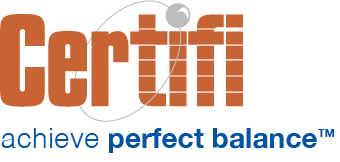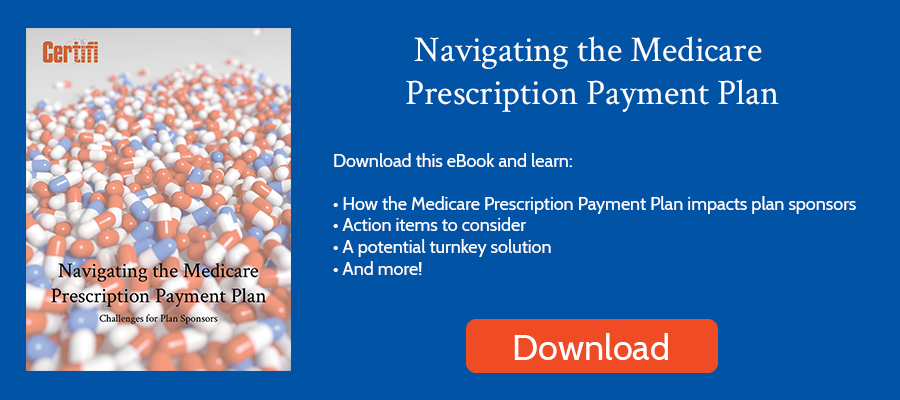In August, the Centers for Medicare and Medicaid Services (CMS) published draft guidance regarding a new payment plan option for Medicare Advantage Part D beneficiaries called the Medicare Prescription Payment Plan. The plan helps beneficiaries spread the cost of expensive prescription drugs over the year rather than making a one-time payment.
However, the program adds several administrative hurdles that Medicare Advantage plans must overcome. Here is an overview of what’s required and a deeper dive into billing and delinquency management requirements:
What Does the Medicare Prescription Payment Plan Require of Insurers?
At a high level, the Medicare Prescription Payment Plan requires the following:
- Insurers must communicate the payment plan and enable Medicare beneficiaries to enroll.
- Insurers must calculate monthly payments based on a defined formula and send monthly invoices.
- Those invoices must contain specific information.
- Insurers must manage delinquent accounts in the prescribed manner.
- Medicare Advantage insurers must pay pharmacies the individual’s portion of the prescription fee.
- Submit specified data to CMS.
How are monthly payments calculated?
The calculation is pretty straightforward, though managing it is more complex than it may first appear. The payment plan uses a “maximum monthly cap” calculation to determine the maximum amount billed each month. That’s calculated differently in the first month of participation than in subsequent months.
The calculation for the first month also accounts for the mandated out-of-pocket maximum – $2000 for 2025. Finally, any incurred costs are also part of the calculation. Incurred costs are any costs incurred before enrolling in the program.
The formula to calculate the maximum monthly cap in January (or the first month in which the beneficiary enrolls if it’s a mid-year enrollment):
(Annual Out-of-Pocket Maximum – Incurred Costs)/Number of Months Remaining in the Plan Year
That will generate a dollar value that the first invoice can’t exceed.
The maximum monthly cost calculation is different in subsequent months. The formula is:
(Sum of Out-of-Pocket Costs not yet billed to beneficiary + Additional Out-of-Pocket Costs Incurred) / Months Remaining in the Plan Year
The draft guidance has several examples to illustrate these calculations. As members add prescriptions and pay previous balances, insurers must use robust accounting methods to ensure proper billing. They also cannot bill more for a given month than the calculated maximum monthly amount.
What information does CMS require on a monthly invoice?
Insurers can deliver billing statements by mail or electronically. Those invoices must contain:
- Notice that the bill is for the Medicare Prescription Payment Plan, a short description of the payment program, and where to find more information
- The participant’s effective date
- Information about the last payment, including the date it was received, the amount, and how the participant paid
- Any previous unpaid balance
- An itemized list of prescription out-of-pocket costs incurred in the month
- The amount due for the current month
- The remaining out-of-pocket cost-sharing balance
- What to do if the member fails to pay by the due date
- How participants opt out of the program and balance due if that happens
- Information about disputes
- Information about how to apply and enroll in the Low Income Subsidy (LIS) program and the benefits of the program
- The insurer’s contact information
Insurers can’t consolidate Part D premium bills with Medicare Prescription Payment Plan bills. However, should a payment be received and the insurer is unsure if it’s for Part D premiums or the Medicare Prescription Payment Plan, the insurer should prioritize paying Part D premium bills first.
What are the delinquency requirements?
Insurers must offer a payment grace period of at least two months. The grace period begins on the first day of the month in which the balance is unpaid, or the first day of the month following the payment request date, whichever is later.
Insurers must also send delinquency communications should a participant fail to pay. The initial notice must explain that the individual failed to pay within 15 calendar days of the due date. It must include:
- Notification that the Medicare Prescription Payment Plan balance is delinquent
- Explain that termination will occur if they fail to pay the balance within the grace period and show that termination date.
- Explain that the balance still must be paid even if the participant terminates.
- Describe how to pay the amount due
- Explain how the participant will pay if terminated. Explain that the participant can not opt into the payment plan in the future if the overdue balance is unpaid.
- Describe the dispute processes
- Provide information about applying and enrolling in the LIS program
- Provide plan contact information
If the participant terminates for non-payment, insurers must send a termination notice. Insurers must send the termination communication within three days after the end of the grace period. It must include:
- Notification that the insurer terminated the participant from the Medicare Prescription Payment Plan
- Explain that the participant must pay for future prescriptions at the pharmacy
- Note that the insurer has not and will not disenroll the participant from the Part D plan
- Explain how the plan will collect the outstanding balance. Also, explain that the participant can’t opt into the program in the future if they do not pay the remaining balance.
- Describe the dispute process
- Provide plan contact information
What’s Next?
The Medicare Prescription Payment Plan, though beneficial to Medicare Part D enrollees, adds a layer of billing overhead for insurers. With part 2 of the draft rule to come later this year and finalization not expected until early 2024, Medicare Advantage insurers must start planning to comply with this rule today in order to meet the 1/1/2025 projected go-live date.
Certifi’s Medicare Prescription Payment Plan billing and payment solutions help Part D plan sponsors and PBMs save time and improve M3P billing accuracy.



